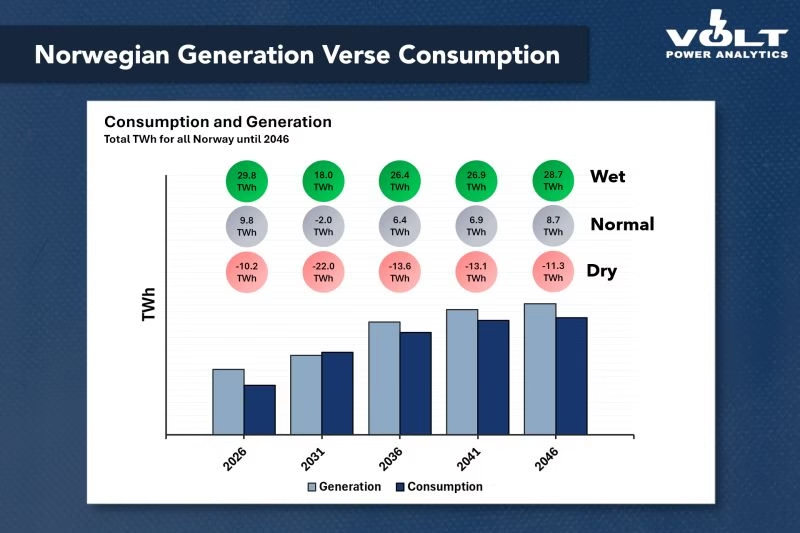
A hot topic discussed quite extensively and often in Norway, is if Norway will maintain a power surplus or not looking ahead to 2040. Based on the current consumption trajectories and the lag in development of new production sources, Volt Power Analytics sees a dwindling power balance to 2030, touching below zero briefly in the early 2030s 📉
One thing that is very important to note, is that these figures are based on a normal hydrological situation. Norway (and the Nordics) has one of the most weather-dependent power systems in Europe, making them strongly dependent on precipitation and snowpack in the mountains. 🏔️
The difference between a dry and wet year could be as much as 20 TWh, meaning some years could be in a power deficit and a reliance on power imports. This is even more imminent if we see multiple dry years in a row. A wet year or multiple wet years in a row could also increase the power balance by 20 TWh, giving room for maximizing exports. 📈
▪️ Using our long-term 2050 Outlook, we have observed that Norway will see a decline in its power surplus towards 2030 due to increasing consumption and limited new power supply.
▪️ But following this reduction, by 2032 the power surplus will return, though it will remain modest.
▪️ Uncertainties include power consumption from data centres, and the level of onshore wind development if consumption growth is insufficient.
▪️ More flexible consumption will be important for the total power balance.
